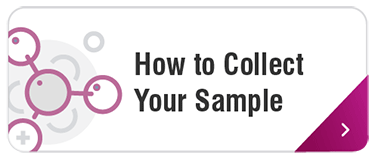Hormone Metabolism & Testing with Clinical & Nutri-West Nutritional Support
Presenters: David Zava, PhD & Brandon Lundell, DC
Join ZRT Lab's founder and chief scientist, Dr. David Zava, and Nutri-West's guest presenter Dr. Brandon Lundell, DC, for a discussion about hormones and hormone metabolism.
Noting the natural cycle of Cortisol during an am-pm cycle, is the lab testing consistent with the time of collection?
Answered by Dr. Zava: Regarding the salivary collection timing for diurnal cortisol tests, ZRT Laboratory does something that other labs don’t do, as far as I am aware. First, we graph the cortisol ranges on a 24 hr cycle, not just morning, noon, evening, and night. To graph on a real-time 24-hour cycle required us to have a lot (many thousands) of cortisol values at different time points throughout a full 24 hr AM and PM cycle.
The cortisol values we derive from testing are then plotted on the REAL TIME cortisol graph. This differs from other labs that provide only a morning, afternoon, evening, and night range, and then plot at each of these time points regardless of the real time the samples were collected. For example, if four samples arrive in the laboratory collected at 5:30 am, 8 am, 7 pm, and 2 am, they would ordinarily be plotted as morning, noon, evening, and night samples, which would not be accurate.
Because ZRT’s cortisol range is based on real-time collected, the values are plotted on the 24 hr cortisol graph at 5:30 am, 8 am, 7 pm, and 2 am, just as they were collected. In most cases, most people do collect at the correct time intervals, but not always, and when not this creates false-high or false low values on the limited 4 point graph if they are always plotted at given times, instead of the roaming time.
If a menopausal woman is low in estrogen (having hot flashes,etc.) should she be taking the supplement DIM?
Answered by Dr. Zava: Based on all the scientific and clinical literature I have read on the benefits of estrogens, I would think that if a menopausal woman is low in estrogens she should take estradiol or something that will convert into estradiol (e.g. DHEA, if the appropriate cellular machinery aromatase is present to convert the DHEA to androgens and then into estrogens).
Theoretically, DIM will increase “healthy” estrogen metabolism (meaning it is supposed to increase hydroxylation of estradiol and estrone at the 2-position, which is considered safer than the 4-position hydroxylation) and help estrogens clear from the body faster.
But if DIM makes estrogen deficiency symptoms worse, and lowers your salivary (or any body fluid) estradiol to an undetectable level that cannot be good for one’s health. Estrogens at physiological concentration are needed for optimal health of the brain, heart, bones, skin, immune system, etc. Estradiol is life-giving at physiological level. Estradiol at very low and high levels is unhealthy, so knowing your estrogen level is important, especially for menopausal women.
Is there a trade off with the beneficial effects of the 16-OH estrogens (bone health) vs. the negative effects of the 16-OH estrogens?
Answered by Dr. Zava: First, the most important estrogen for bone is estradiol. 16-OH, like other estrogens, may have some benefit; but estradiol trumps all other estrogens, so focus should be on a woman’s estradiol level.
Second, I would assume that the “negative effects” of estrogens refer to higher risk of developing breast cancer, based on high 16-OH-estrone and low 2-OH-estrone (low 2/16 ratio). There is no good evidence in the literature that the 2/16 ratio predicts breast cancer risk, despite what you may hear from labs.
When this information was first coming out in the research literature, there was only one group that believed 16-OH-estrone (and its relationship to 2-OH-estrone) was associated with increased breast cancer risk, and they sold immunoassay kits that tested for 2- and 16-hydroxyestrogens and also sold products that increased the ratio (e.g. DIM and Indole-3-Carbinol-I3C). This was very similar to the iodine group that proclaim(ed) everyone is iodine deficient based on a flawed test (iodine loading test) that made everyone deficient, and then offered a solution (high dose iodine) that they also sold (sell).
So the truth about 16-OH estrogens is that higher levels might be slightly (emphasis) associated with increased breast cancer risk in premenopausal women, but is associated with a slightly decreased risk in postmenopausal women. For more detailed information please refer to the following review articles:
- Obi, A. Vrieling, J. Heinz, and J. Chang-Claude. Estrogen metabolite ratio: Is the 2-hydroxyestrone to 16alpha-hydroxyestrone ratio predictive for breast cancer? Int.J Womens Health 3:37-51, 2011.
- Jacob Schor. Estrogen Metabolite Ratios: Time for Us to Let Go. Townsend Letter, January 2013 pages 52-55.
How do you enhance COMT variant specifically with 4-OH-E1 conversion to 4-MeOE1?
When I evaluate urine metabolite tests in women who indicate they have an active breast cancer, I usually see elevated levels of all estrogens we test: estradiol, estrone, estriol (less often), 2-OH-estradiol, 2-OH-estrone, 4-OH-estradiol, and 4-OH-estrone (referred to above as 4-OH-E1).
While proper methylation of these 2- and 4-catechol estrogens is important, no doubt, as this will defuse them and prevent further conversion to more toxic 4-quinone estrogens, the real key is reducing the source of estrogens (estradiol and estrone), which derive from the tumor itself. Breast, and probably also prostate and uterine, cancers become an estrogen factory as they soak up estrogen precursors (DHEA and androstenedione) and convert them to estrone and estradiol, instead of growth-inhibiting androgens, testosterone and DHT.
Tumors over-express all the necessary biochemical machinery to convert estrogen precursors to estradiol and estrone. Because of the oxidizing environment (lots of Reactive Oxygen Species - ROS) the estrogens convert to catechols (2- and 4-hydroxyestrogens), and then to estrone quinones that react with and damage DNA, perpetuating the growth of the tumor. If you don’t methylate well due to COMT variant or low levels of COMT substrates (e.g. vitamins B6, B12, folate, betaine), then the chances of a catechol estrogen converting to a more toxic and mutagenic estrogen quinone are increased, as is your risk of developing breast cancer at some point in time in your life.
The key is: don’t let tumor cells get a foothold. Outside of worrying about methylation polymorphisms, which you probably can’t do much about, there are some simple things I believe everyone can do to decrease cancer risk. Those that are most beneficial include: a healthy and regular exercise program, good diet with focus on green leafy vegetables and food with color (this means they have beneficial phytochemicals), nutritional supplements with adequate vitamins and minerals (especially iodine and selenium), good restful sleep in the dark (increases melatonin that inhibits cancer), and reducing stress(ors) as much as possible.


